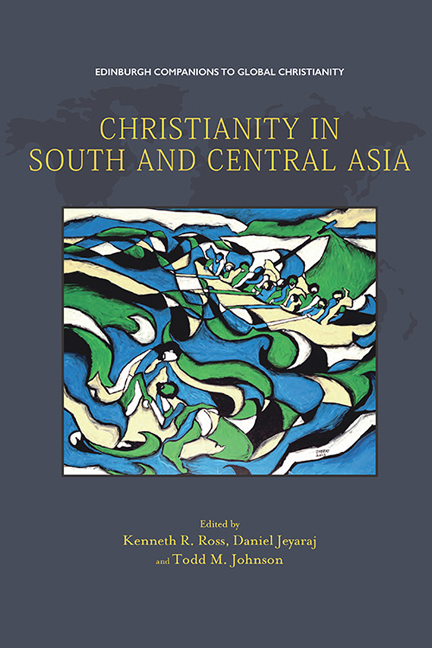Social and Political Context
Published online by Cambridge University Press: 30 April 2020
Summary
In several countries of South and Central Asia, Christianity is a vibrant faith, with the number of new adherents increasing. Efforts are being made everywhere to use local languages in worship and to adapt to the cultures and customs of the local people, provided they do not go against the basic tenets of the faith. Unfortunately, in quite a few countries in these regions, Christianity is under siege. There are many reasons for this, including: the rise of fundamentalists from other religions who consider Christianity a threat not only to their traditional beliefs but also to their (often unjust and exploitative) way of life; governments that are in nexus with these fundamentalist forces and theocratic states in which the ‘other’ religion (especially Christianity) is seen as ‘alien’ and Christians are treated as second-class citizens; and, in some countries, blatant persecution of Christians, who are killed, beaten up, incarcerated or denied their rights to practise their religion. War and conflicts disrupt normal life in many South and Central Asian countries today, which is a good reason for some Christians from these trouble spots to seek refuge or asylum in materially better-off and more secure places such as Australia, New Zealand, the UK, the USA, Canada or one of the countries of the European Union. Finally, in several countries, Christians – particularly because of their educational background – are at an advantage and seek to better their prospects elsewhere through migration. So, in effect, in spite of recent conversions in some countries, there are declining numbers of Christians in others.
India occupies a special place in this part of Asia; with more than 1.3 billion people, it is the world's largest democracy. India has a constitution that is secular and pluralistic in character and is not wedded to any particular belief or ideology. Although Hinduism is the major religion in India, the country is home to most of the major religions of the world. These characteristics are perhaps not found in any other Asian country. Christians constitute a tiny proportion of this population, but numerically Indian Christians are one of the largest Christian communities in Asia. They have contributed significantly in every possible sphere of the country's development since independence in 1947. Yet Christianity in India is under siege. India therefore becomes a critical case study in the context of nations in this region that are theocratic or simply autocratic.
- Type
- Chapter
- Information
- Christianity in South and Central Asia , pp. 339 - 350Publisher: Edinburgh University PressPrint publication year: 2019

